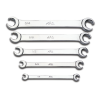- Joined
- Dec 5, 2010
- Messages
- 5,500
- Display Name
Display name:
GeorgeC
My C140A has an analog panel mounted oil temp gauge. It also has an Insight engine monitor.
I could get a thermocouple for the Insight.
I could also get an EI primary.
I don't have a feeling for the pros and cons, or the complexity of either approach.
I could get a thermocouple for the Insight.
I could also get an EI primary.
I don't have a feeling for the pros and cons, or the complexity of either approach.

